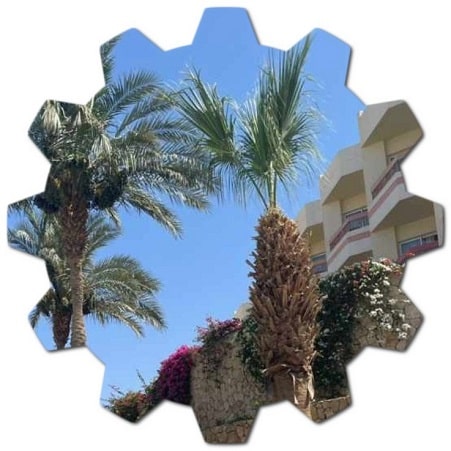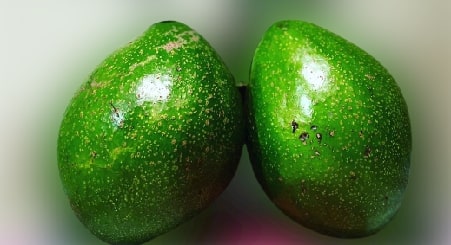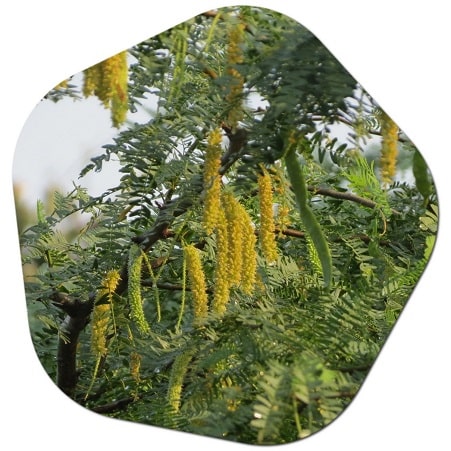What is the most common tree in Qatar?
The most common tree species in Qatar is the Ghaf tree (Prosopis cineraria), also known as the “Qatar national tree.” The Ghaf tree is a hardy and drought-tolerant species that is well-suited to the arid climate of Qatar. It has adapted to survive in sandy soils and can withstand high temperatures and low rainfall. The Ghaf tree is recognized for its deep-rooting system, which allows it to access water from deep within the ground.
The Ghaf tree is a small to medium-sized tree with a dense canopy of feathery foliage. It provides shade and shelter to various desert creatures and is an important component of Qatar’s natural ecosystem. The tree also holds cultural and historical significance in the region, as its wood has traditionally been used for construction, fuel, and medicinal purposes.

In addition to the Ghaf tree, other tree species found in Qatar include the Acacia tree, Tamarind tree, Neem tree, and various species of palm trees, such as the Date palm (Phoenix dactylifera). These trees, although less abundant than the Ghaf tree, contribute to the diversity of Qatar’s flora and provide vital habitat and ecosystem services in the desert environment.
Names of trees growing in Qatar
Here are some common tree species that can be found growing in Qatar:
- Ghaf Tree (Prosopis cineraria)
- Sidra Tree (Ziziphus nummularia)
- Tamarind Tree (Tamarindus indica)
- Acacia Tree (Acacia spp.)
- Neem Tree (Azadirachta indica)
- Indian Mast Tree (Polyalthia longifolia)
- Date Palm (Phoenix dactylifera)
- Canary Island Date Palm (Phoenix canariensis)
- Fan Palm (Livistona spp.)
- Pomegranate Tree (Punica granatum)
These are just a few examples of the tree species that can be found growing in Qatar. The country has a diverse range of plants and trees that have adapted to the arid desert climate. Different species may be found in different regions of Qatar, depending on factors such as soil conditions, availability of water, and human landscaping practices.
Are there fruit trees in Qatar?
Yes, there are fruit trees that can be found in Qatar. Despite the arid climate, certain fruit tree species have been cultivated and adapted to grow successfully in Qatar’s conditions. Some common fruit trees found in Qatar include:

- Date Palm (Phoenix dactylifera): Date palms are widely cultivated in Qatar for their delicious and nutritious fruit, dates. Qatar has a long tradition of date palm cultivation and is known for producing high-quality dates.
- Pomegranate Tree (Punica granatum): Pomegranate trees are well-suited to Qatar’s climate and are grown for their sweet and tangy fruits. Pomegranate trees can be found in both urban gardens and rural areas.
- Citrus Trees: Varieties of citrus trees, such as lemon, lime, and mandarin, can be grown in Qatar. With proper care and irrigation, citrus trees can thrive and produce fruits.
- Fig Tree (Ficus carica): Fig trees can be grown in Qatar and produce sweet, succulent fruits. They are relatively tolerant of arid conditions and can be found in gardens and landscapes.
- Guava Tree (Psidium guajava): Guava trees can be cultivated in Qatar and produce tropical fruits known for their distinctive flavor. They require adequate water and protection from extreme heat.
- Mango Tree (Mangifera indica): Mango trees can be grown in Qatar, but they may require additional care and protection from the hot summer sun. With proper cultivation techniques, they can produce juicy and flavorful mangoes.
It’s important to note that fruit tree cultivation in Qatar may require proper irrigation, protection from extreme temperatures, and suitable soil conditions. Gardeners and horticulturists in Qatar have developed techniques and expertise to cultivate fruit trees in the local environment. Trees growing in Qatar >>
When is tree pruning in Qatar?
Tree pruning in Qatar is generally recommended during the cooler months when the temperatures are milder. The ideal time for pruning trees in Qatar is typically in late winter or early spring, specifically from December to February. During this period, the weather is relatively cooler, and trees are in their dormant phase or experiencing reduced growth. Pruning during this time helps minimize stress on the trees and allows them to recover and heal before the onset of the hot summer months.
However, it’s important to consider the specific tree species and its growth patterns, as some trees may have different pruning requirements. Additionally, if there are any damaged or dead branches that pose a risk to safety, they should be pruned as soon as possible, regardless of the season.
If you’re uncertain about the pruning needs of a particular tree or if you have specific concerns, it’s advisable to consult with a local arborist, horticulturist, or a professional tree service. They can provide guidance tailored to your specific tree species, local climate, and the optimal timing for pruning in Qatar.
Prices of tree felling and pruning in Qatar
The prices of tree felling and pruning services in Qatar can vary depending on several factors such as the size, species, location, complexity of the job, and the specific tree service provider. Additionally, prices may fluctuate over time due to market demand, availability, and other variables. It’s recommended to contact local tree service companies or arborists in Qatar to obtain accurate and up-to-date pricing information.
When requesting quotes for tree felling and pruning services, it’s helpful to provide details about the specific trees, including their size and condition, as well as the scope of work required. This will enable the tree service providers to provide you with a more accurate estimate.
Keep in mind that tree felling and pruning are specialized tasks that require expertise and may involve risks. It’s essential to hire experienced and reputable professionals who follow industry best practices for safety and proper tree care.
By reaching out to multiple tree service companies and comparing their quotes, you can get a better understanding of the prevailing prices for tree felling and pruning services in Qatar.
Are there any endemic trees in Qatar?
Qatar, being a desert country with a challenging climate, does not have many endemic tree species. However, there are a few native plants that are considered endemic or indigenous to the Arabian Peninsula, including Qatar. These plants have adapted to the arid conditions and are part of the region’s unique ecosystem. While they may not be classified as trees in the traditional sense, they are notable native plant species. Here are a few examples:

- Ghaf Tree (Prosopis cineraria): Although not strictly endemic to Qatar, the Ghaf tree is native to the Arabian Peninsula and is recognized as the national tree of Qatar. It is a hardy and drought-tolerant tree with deep roots and provides essential shade and habitat in the desert.
- Sidra Tree (Ziziphus nummularia): The Sidra tree, also known as the Sidr or Christ’s Thorn Jujube, is native to the Arabian Peninsula. It is a small, thorny tree or shrub that can withstand harsh desert conditions.
- Salam Tree (Acacia tortilis): The Salam tree, also known as the Umbrella Thorn Acacia, is native to the Arabian Peninsula. It is a thorny, drought-tolerant tree with a distinctive umbrella-shaped canopy and is commonly found in arid regions.
While these native plant species may not be considered endemic to Qatar alone, they are part of the broader Arabian Peninsula ecosystem and contribute to the region’s biodiversity. What are the most popular tree species growing in Qatar? >>





